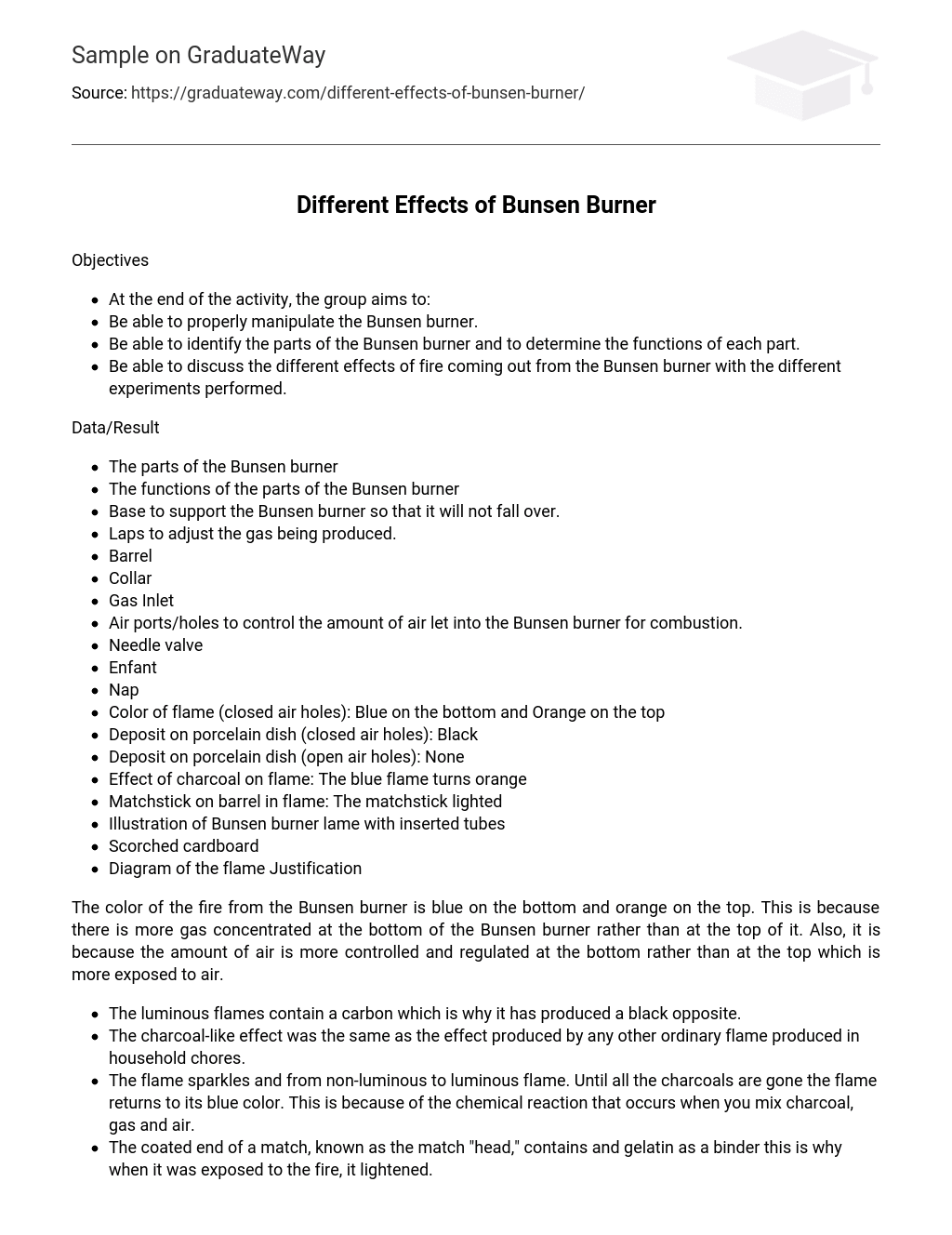Objectives
- At the end of the activity, the group aims to:
- Be able to properly manipulate the Bunsen burner.
- Be able to identify the parts of the Bunsen burner and to determine the functions of each part.
- Be able to discuss the different effects of fire coming out from the Bunsen burner with the different experiments performed.
Data/Result
- The parts of the Bunsen burner
- The functions of the parts of the Bunsen burner
- Base to support the Bunsen burner so that it will not fall over.
- Laps to adjust the gas being produced.
- Barrel
- Collar
- Gas Inlet
- Air ports/holes to control the amount of air let into the Bunsen burner for combustion.
- Needle valve
- Enfant
- Nap
- Color of flame (closed air holes): Blue on the bottom and Orange on the top
- Deposit on porcelain dish (closed air holes): Black
- Deposit on porcelain dish (open air holes): None
- Effect of charcoal on flame: The blue flame turns orange
- Matchstick on barrel in flame: The matchstick lighted
- Illustration of Bunsen burner lame with inserted tubes
- Scorched cardboard
- Diagram of the flame Justification
The fire from the Bunsen burner appears blue at the bottom and orange at the top, mainly due to the disparity in gas concentration. Additionally, the bottom of the burner has a more regulated and controlled airflow compared to the top, which is more exposed to air.
- The luminous flames contain a carbon which is why it has produced a black opposite.
- The charcoal-like effect was the same as the effect produced by any other ordinary flame produced in household chores.
- The flame sparkles and from non-luminous to luminous flame. Until all the charcoals are gone the flame returns to its blue color. This is because of the chemical reaction that occurs when you mix charcoal, gas and air.
- The coated end of a match, known as the match “head,” contains and gelatin as a binder this is why when it was exposed to the fire, it lightened.





